Video call etiquette: 10 virtual meeting pet peeves
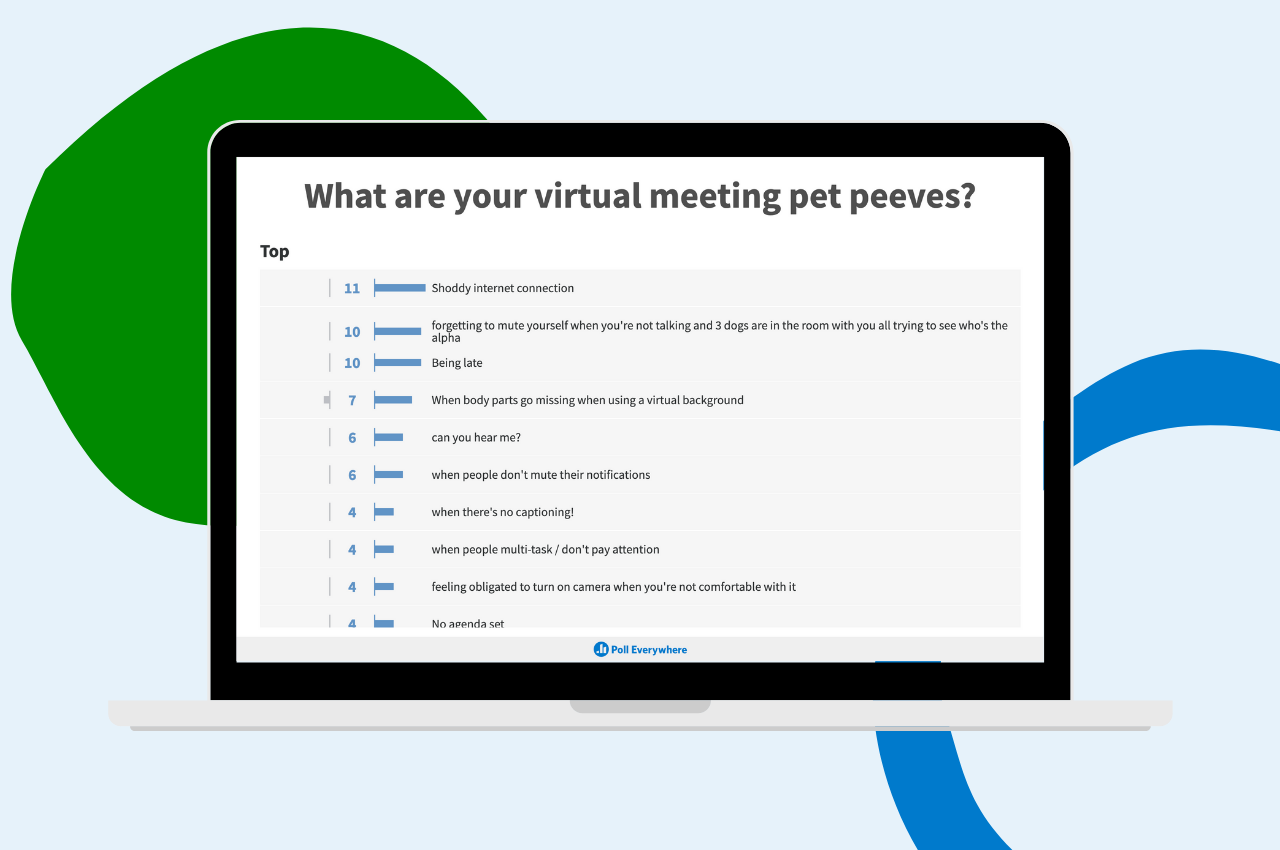
Barking dogs, spouse walking around in the background, and bad lighting were all understandable mishaps early on in shelter-in-place – even comical. We were all trying to figure out what worked for us. However, now that we are about 5 months into shelter-in-place, these small meeting distractions should be avoided. Of course, anything can happen and these mishaps have taught us how to be more empathetic but now is the time to set up video call etiquette.
See also: Online meeting basics for any size company
We surveyed the Poll Everywhere team about their virtual meeting pet peeves and have outlined a few tips for maintaining proper video call etiquette:
1. Being late
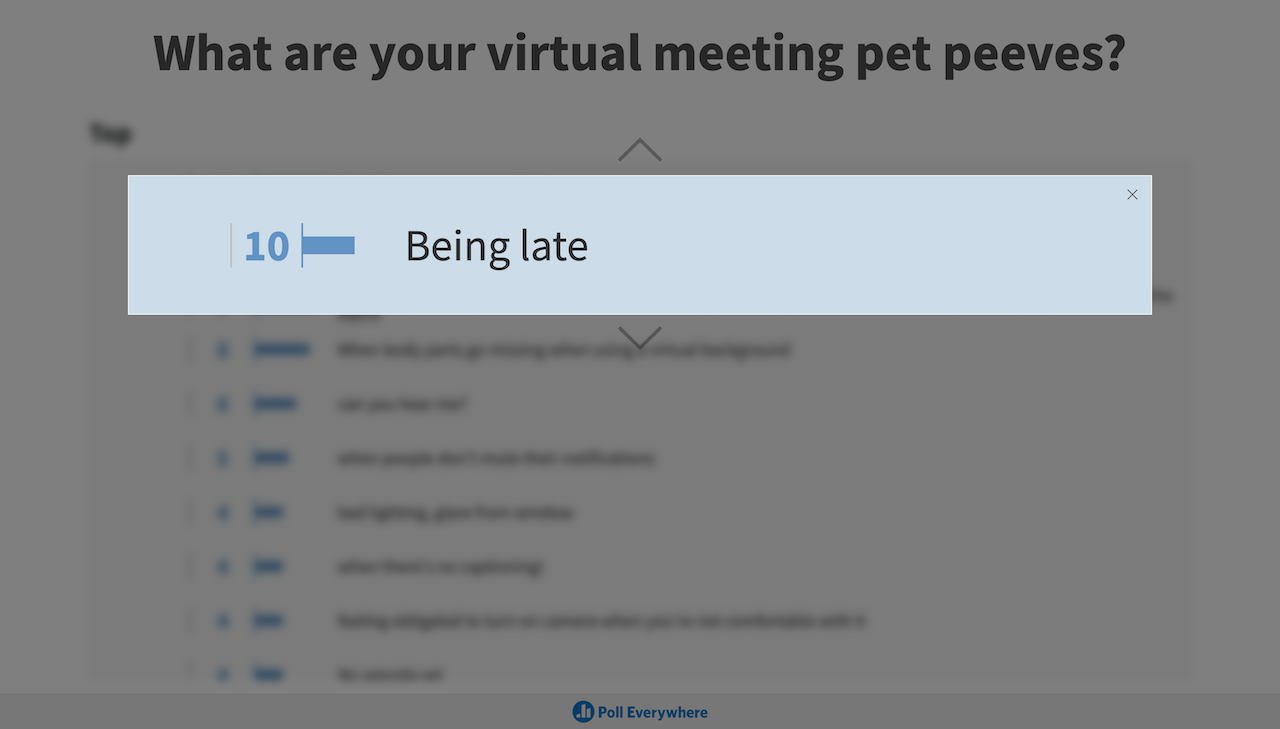
Virtual or not, being late to a meeting is a big pet peeve for all. Every minute someone is late to a meeting feels like eternity. Make it a habit to join a meeting a few minutes earlier than the time in order to avoid being late. This gives you time to check your audio, open any necessary notes, and prepare for the meeting. If you struggle with this, consider integrating your Google Calendar with Slack to receive notifications of upcoming meetings.
2. Bad internet connection
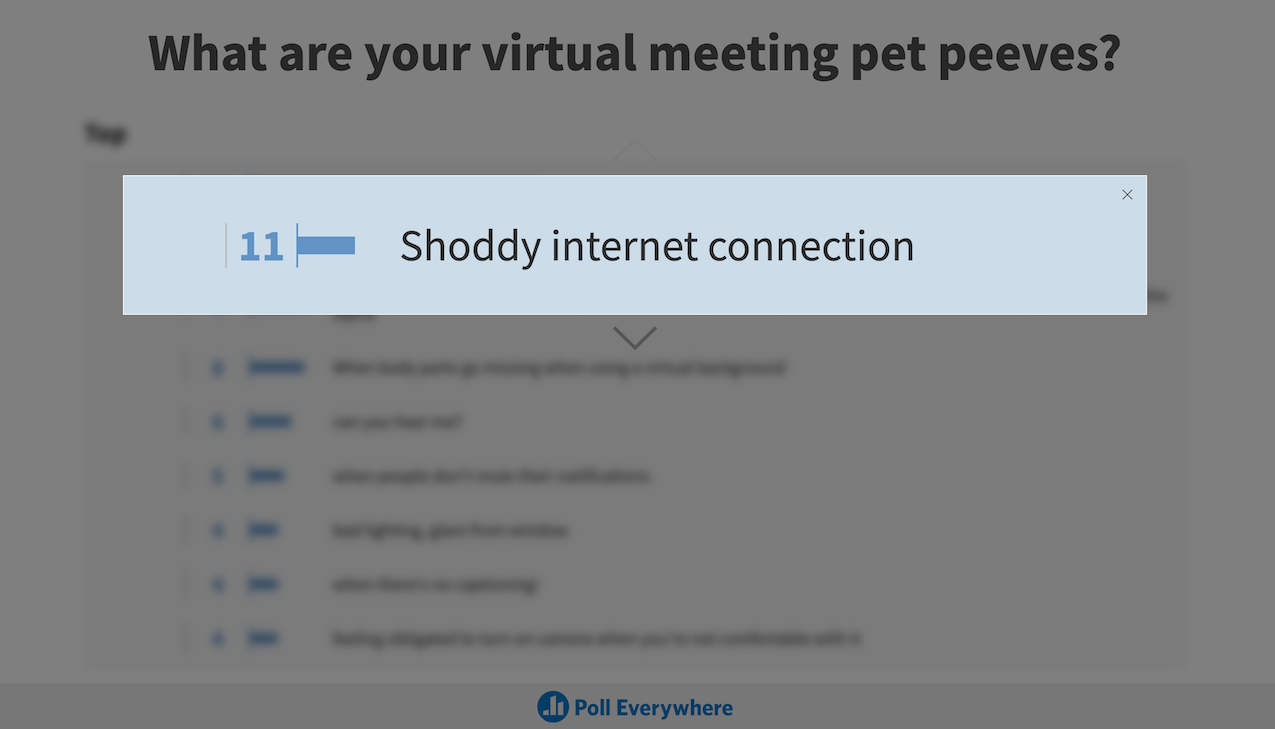
Getting cut off by bad internet during a presentation or a meeting is frustrating. These instances can be out of our control at times, but if you find yourself constantly experiencing internet interruptions, consider taking steps to fix it. Here are a few tips to fix your internet connection and improve the quality of your video call.
3. Check your tech
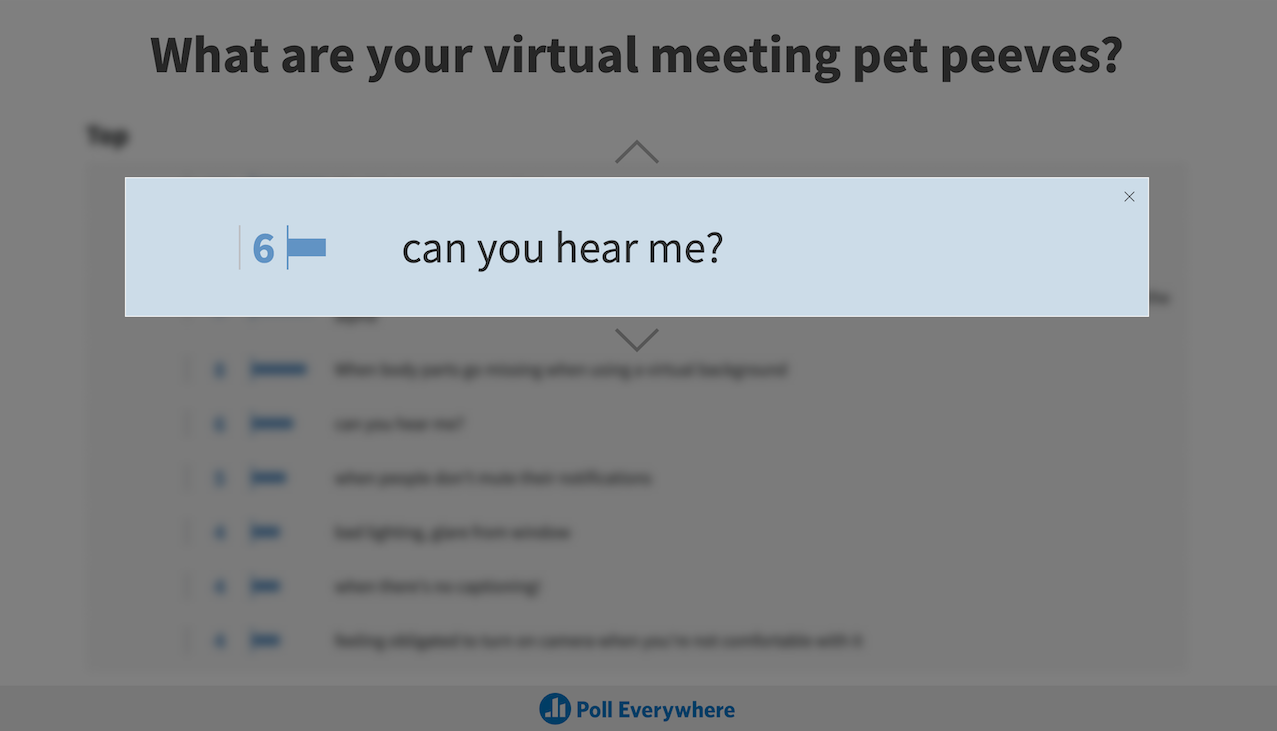
Avoid audio issues and other interruptions by checking your tech before your meeting. Here’s a list of things to look out for:
- Check the default input and output audio. If you’re using bluetooth headphones, chances are your videoconferencing software has your computer’s speaker as a default, which may explain why you can’t hear anything. This applies to microphones, too.
- Test your audio before your meeting. Join your meeting a few minutes early and run a test to see if your microphone is working.
- Check your internet connection. Are you connected to the right wifi? Do you need to fix your internet connection? See above for quick internet fixes.
4. Forgetting to mute or unmute
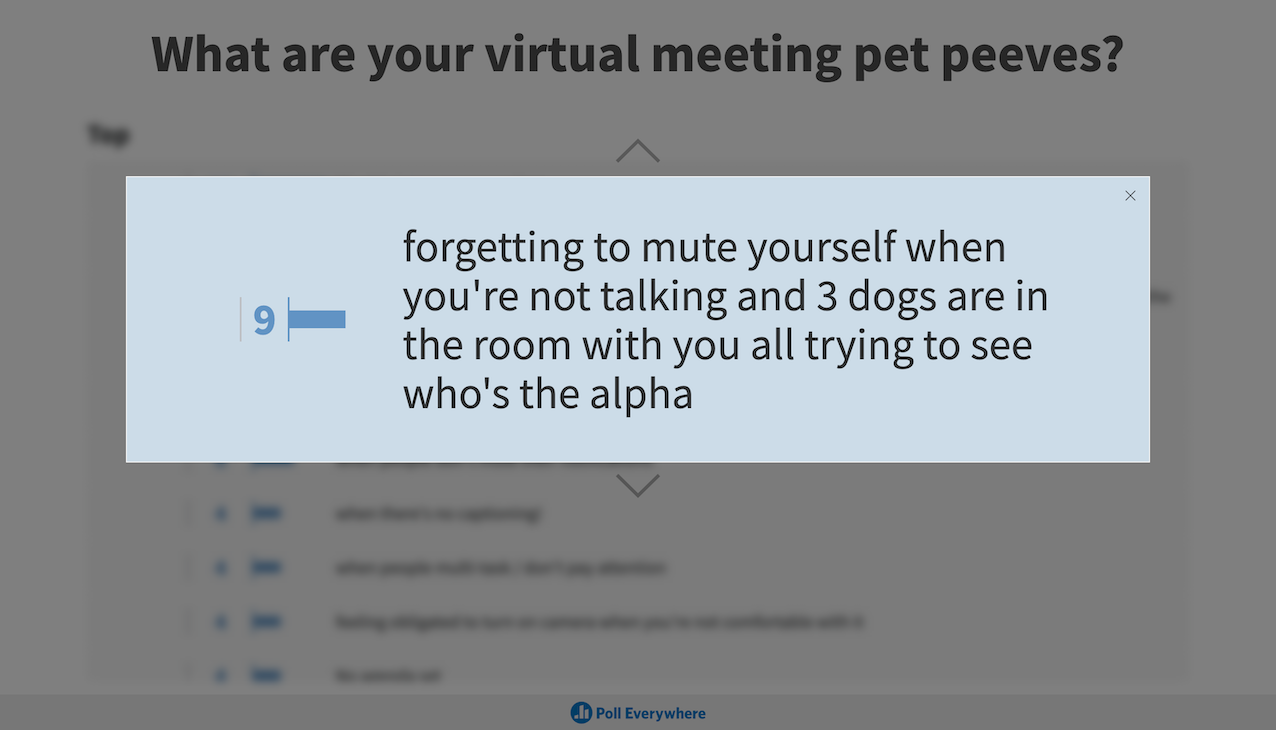
There are two types of people in the world: those that never mute themselves or those that forget to unmute. Generally, it is good practice to mute yourself if you aren’t speaking, even if you are in a quiet location. Small noises like drinking water, typing, or notifications can disrupt the video call and intercept the audio of another speaker. Random noises can also distract others during the meeting.
On the other hand, don’t forget to unmute yourself before you speak. It’s frustrating to share a great idea or important revelation to your team only to be mute the entire time. Make sure you’re heard. If you use Zoom, hold the spacebar to temporarily unmute yourself.
5. Staring at yourself
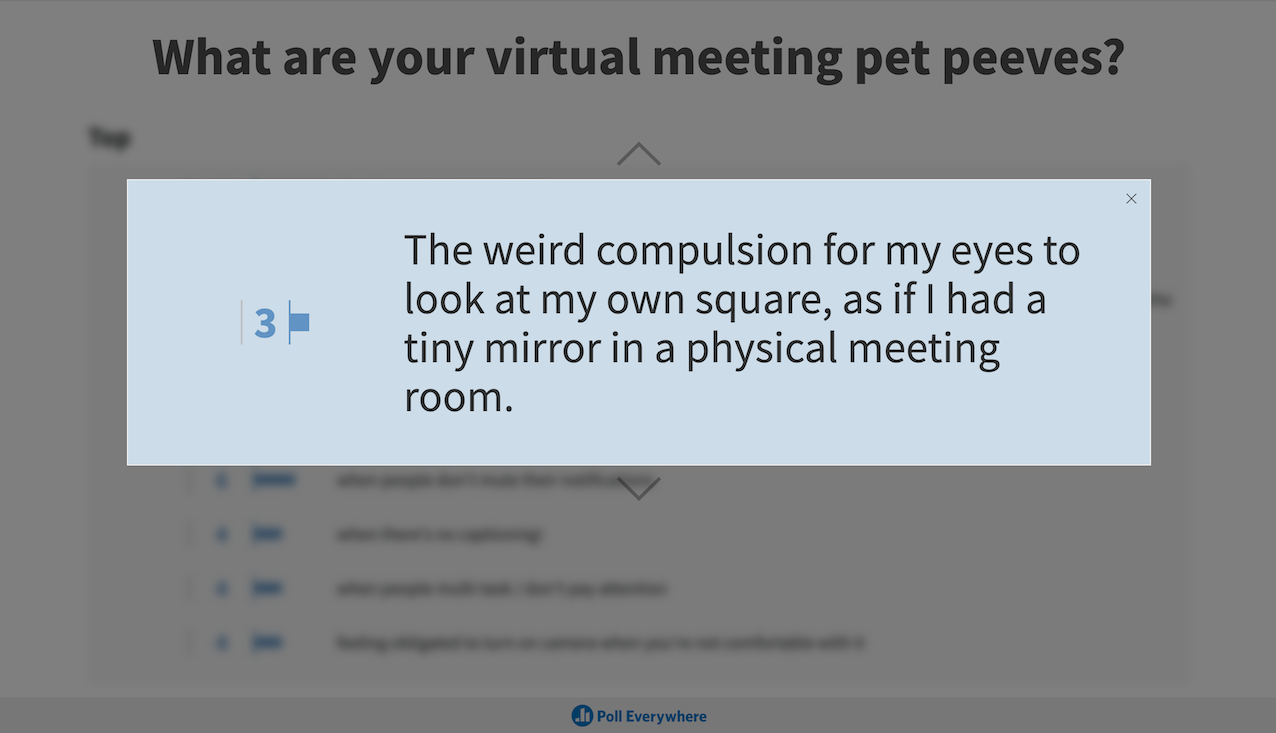
Did you know that staring at yourself during a video call can contribute to Zoom fatigue? (Read more: How to tackle Zoom fatigue.) Our eyes are naturally drawn to ourselves. Avoid this by using Speaker view or pinning the speaker. This hides our own frame, allowing us to focus on the topic at hand.
6. Bad lighting
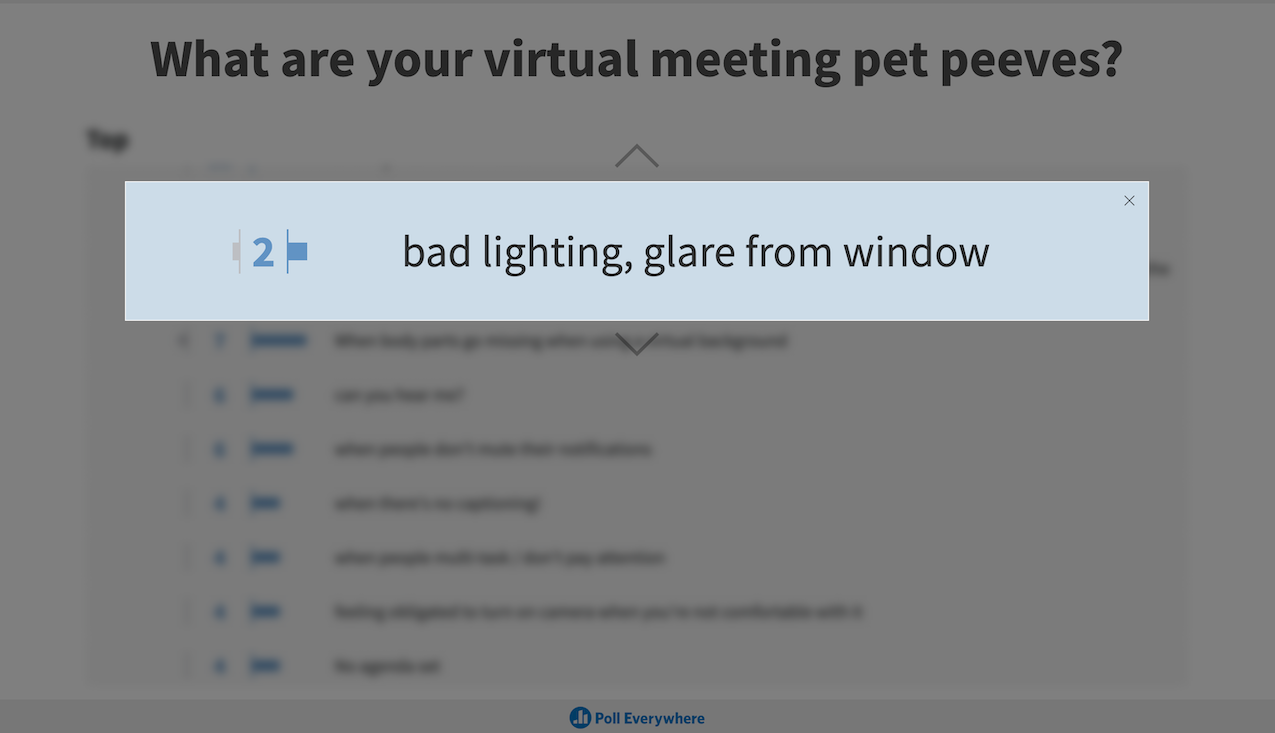
Sitting in a poorly lit room can really bug your coworkers if you are presenting. Sitting in the dark lowers your camera quality, creating a dark and pixely video call. Here are some ways to avoid this:
- Sit facing a window, avoid being backlit
- Turn on your lights or use a lamp
- Open a blank document and turn up the brightness of your computer to illuminate your face
7. Cameras
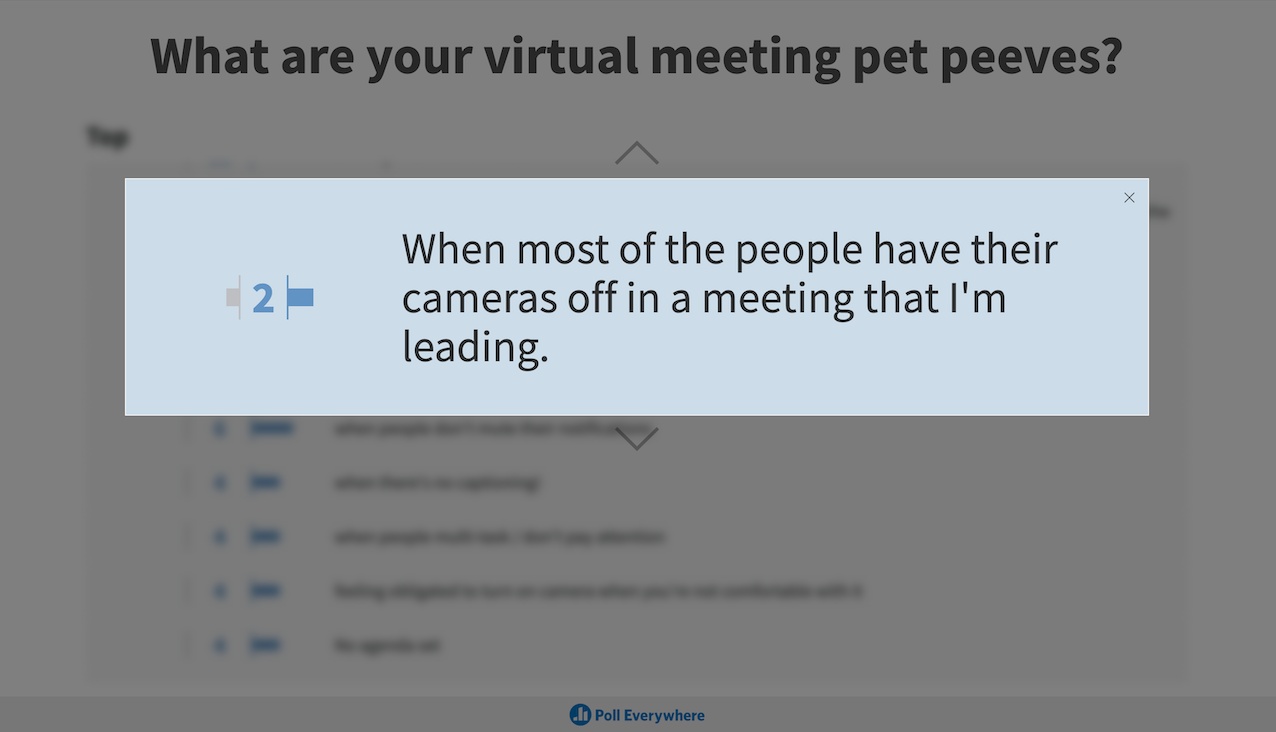
This is a highly contested topic (check out that downvote to upvote ratio above). Some people prefer cameras on while others may not feel comfortable with it. No one is obligated to turn on their camera, but given the situation at hand, you may want to adjust accordingly. General rule of thumb, turn on your camera if you are presenting at a meeting or in a smaller intimate meeting like a 1:1. No one likes talking directly to a blank screen.
8. Set an agenda
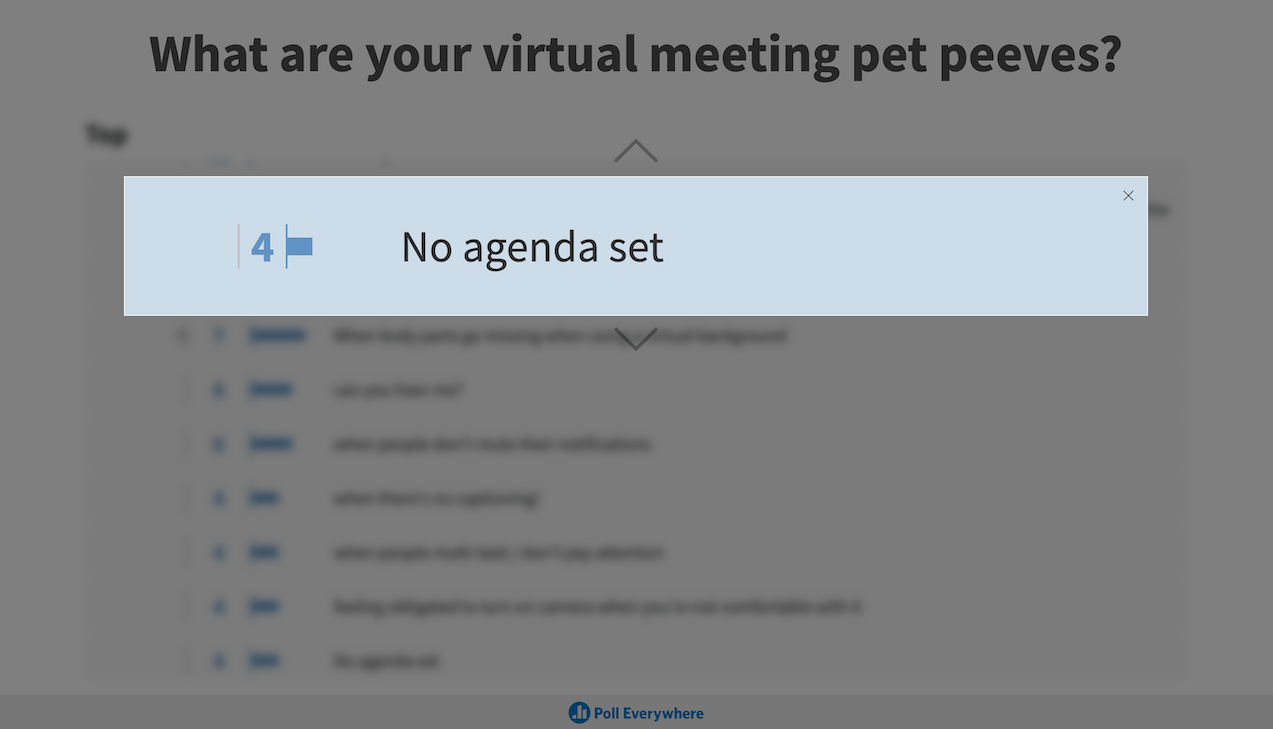
Meetings are time consuming and draining. We’ve all been in a meeting that could’ve been an email. Host effective remote meetings by setting an agenda beforehand and sticking to it. Send out a meeting document with the calendar invite to allow people to drop in topics beforehand. You can also start the meeting with a quick open-response question asking for meeting topics to discuss. Having an agenda ensures that the meeting runs smoothly and everyone stays on topic.
9. Interrupting
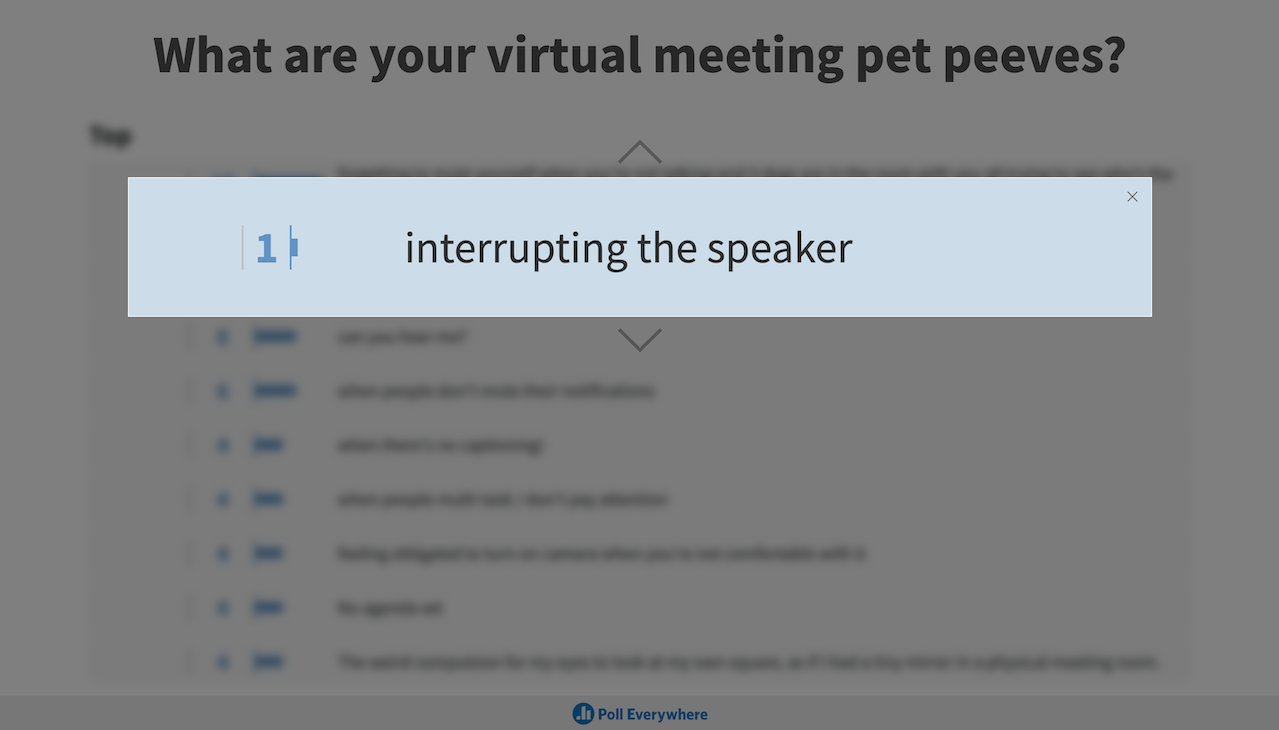
Video calls are unnatural because it is hard to gauge the cadence of a conversation. Are they done speaking or did their audio cut off? Interrupting during a virtual meeting is awkward for everyone involved. Before you speak, try raising your hand or using the virtual raise hand option in Zoom to get your meeting attendees’ attention. If your team often speaks all at once, try using a word cloud or Q&A activity to allow your team to share their ideas without interrupting.
10. Be present
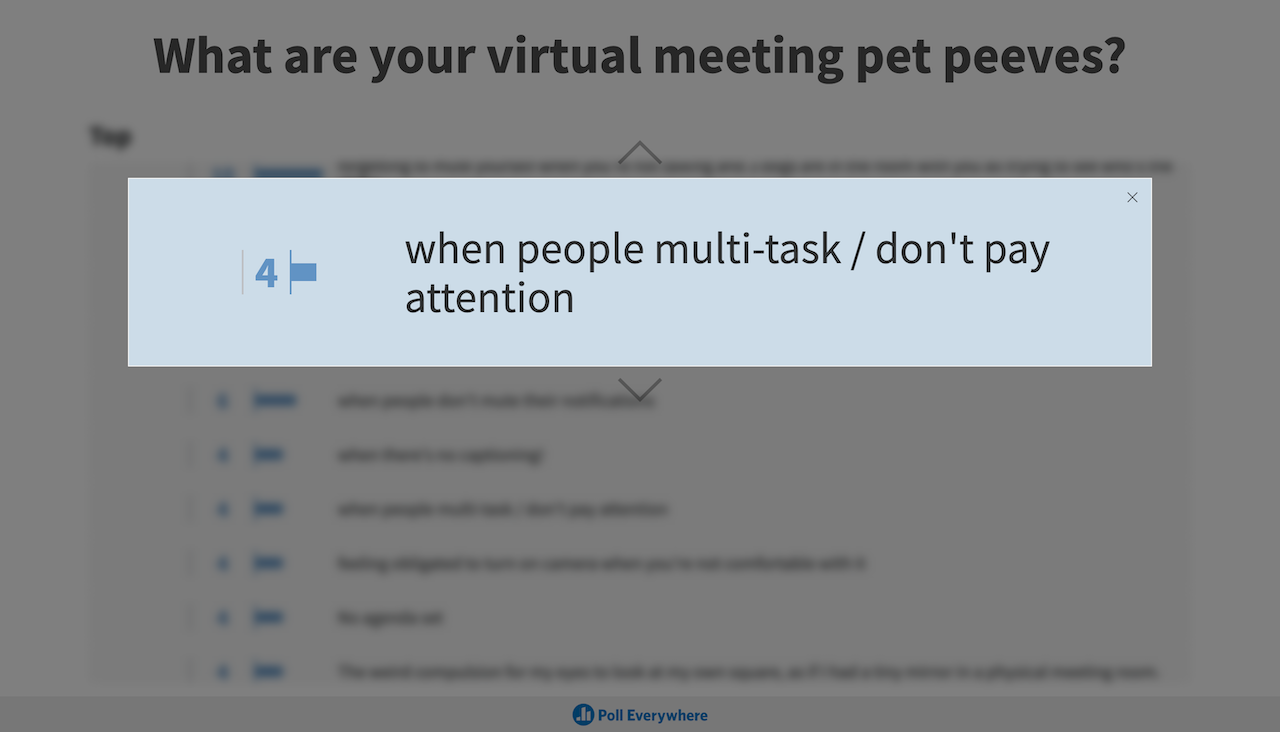
This may seem like a no brainer, but be present during your meetings. You may think you’re being sly by multitasking during a meeting, but it is noticeable and disrespectful to whoever is speaking. It may also contribute to your Zoom fatigue. Give your full attention during a virtual meeting to create a better remote work experience for everyone.
What do you think of our list? Is there a virtual meeting pet peeve you have? Ask your team about their pet peeves by copying this activity directly to your Poll Everywhere account. If you’re interested in hosting effective remote meetings or scaling your company culture, download our free ebook.